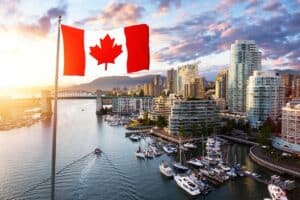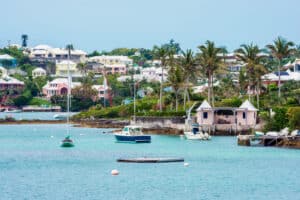Costa Rica is a beautiful vacation destination – but not without its fair share of troubles. While there is some crime in the country, as long as you stay informed and exercise increased caution, you’ll be safe during your visit to Costa Rica.
Are you planning a last minute trip to Costa Rica? We’ve put together all the resources you’ll need for a fun & safe travel:
🛌 Best & Safest Places to Stay in Costa Rica:
👉 Azul Hotel & Retreat – Airport shuttle, Fabulous breakfast, Beachfront
👉 Ecolirios Boutique Hotel – Spa and wellness centre, Free WiFi, Restaurant
👉 Planet Hollywood Costa Rica – Sea view, 7 restaurants, 24-hour front desk
👉 Hotel Arenal Springs Resort – Hot spring bath, Exceptional breakfast, Bar
⛱️ Fun Activities & Tours in Costa Rica:
👉 Arenal Volcano Full-Day Combo Tour with Lunch and Dinner
👉 Manuel Antonio Park Nature Guided Tour
👉 Upper Balsa River White Water Rafting Class 3/4 in Costa Rica
🚗 Best & Safest Costa Rica Transportation Services:
👉 Airport Pickup Service – Welcome Pickups
👉 Rent a Car – DiscoverCars
🙏 Stay Safe While Travelling:
👉 Safetywing (for medical insurance)
👉 VisitorsCoverage (for trip insurance)
Is Costa Rica Safe?
We’ll reiterate – as long as you exercise increased caution Costa Rica will be safe for you.
Here is some safety information that you should know about Costa Rica:
- Crime rate: Moderate and on a steady incline
- Danger zones: A number of neighborhoods, listed below, should be avoided
- Police presence: Costa Rica has no army, but multiple police forces
- Natural disasters: There’s a moderate risk of hurricanes, floods, earthquakes, and volcanic eruptions
- Weather patterns: Tropical climate with clear-cut wet and dry season
- Carbon monoxide: Four incidents reported, bring a CO detector
- Traveling solo or with family: Possible, as long as you’re careful
- Public transport: It’s risky and unsafe
- Medical care quality: One of the best in Latin America

Travel Advisory for Costa Rica
The matter of safety in Costa Rica is complex and layered. There are many factors to consider, including crime, health risks, and natural disasters.
The US State Department categorizes countries into four levels:
- Level 1: Exercise Normal Precautions — Minimal risk, requires normal precautions
- Level 2: Exercise Increased Caution — Heightened risks to safety and security, requires increased caution
- Level 3: Reconsider Travel — Serious risks to safety and security, reconsider traveling
- Level 4: Do Not Travel — Life-threatening risks to safety and security; visitors are advised not to travel to that country or leave as soon as possible
The US, Canadian, Australian, and New Zealand travel advisories put Costa Rica into the second safety category and advise potential travelers to exercise a higher degree of caution. The reason for this is Costa Rica’s high frequency of crime.
The travel advisories emphasize the high risks of petty crimes, scams, spiked drinks, fraud, and gang-related violence, especially in the larger cities, and particularly in some isolated, crime-riddled areas.
The Australian travel advisory additionally points out that Costa Rica presents serious health risks, mainly from malaria and the Zika virus, both mosquito-borne illnesses. “Common waterborne, foodborne, and other infectious diseases include tuberculosis, typhoid, hepatitis, and rabies” are additional health concerns in Costa Rica.
Finally, the UK travel advisory warns travelers about the extreme weather conditions and potential natural hazards and disasters in the country. This refers to the risk of hurricanes, earthquakes, and volcanic eruptions in almost all parts of Costa Rica.
A Comprehensive Look at Costa Rica Crime Rates
According to Numbeo, Costa Rica has a crime rating of 59.58, which puts the country into the “moderate” risk category. San Jose, on the other hand, the capital of Costa Rica, has a slightly higher crime rating of 64.57, which puts it in the “high” risk category.
According to Numbeo, the most common crimes are drug use, property theft, and systemic corruption and bribery. The most concerning piece of data is that the last three years have seen a noticeable rise in crime.
The table below presents the comprehensive crime ratings in relation to individual categories, compiled by Numbeo contributors. The data is based on the ratings of 245 people, which is a relatively high and reliable number for this website.
| Safety Concerns | Crime Rate | Status |
|---|---|---|
| Overall Crime Level | 59.58 | Moderate |
| Increase in Crime (Past 3 Years) | 72.79 | High |
| Home Break-Ins and Thefts | 53.15 | Moderate |
| Mugging and Robbery | 58.83 | Moderate |
| Car Theft | 47.67 | Moderate |
| Theft from Vehicles | 60.96 | High |
| Personal Attacks | 43.20 | Moderate |
| Verbal Insults | 30.22 | Low |
| Racial, Ethnic, Gender, or Religious-Based Attacks | 16.67 | Very Low |
| Drug Use and Dealing | 63.52 | High |
| Property Crimes (Vandalism and Theft) | 62.50 | High |
| Violent Crimes (Assault and Armed Robbery) | 59.39 | Moderate |
| Corruption and Bribery | 64.61 | High |
| Safety Walking Alone in Daylight | 68.01 | High |
| Safety Walking Alone at Night | 33.45 | Low |
Dangerous Areas
Probably the best way to make sure you don’t face any trouble is to avoid going to dangerous and problematic neighborhoods.
We highly recommend that you stay away from:
- Desamparados
- La Carpio
- Los Guidos
- Leon XIII
- The port city of Limon
- Puerto Viejo
- Puntarenas
- Chahuita
- The wider Cóbano area, especially the small coastal towns like Mal País, Montezuma, and Santa Teresa
- Quepos
- Jacó, particularly the Tárcoles River and its crocodile viewing area
- Dominical
- Public parks in San Jose
- The Coca-Cola bus terminal between El Paso de la VacaThe inner downtown area, between San Juan de Dios Hospital, but also the National Museum, Avenida 1, and Avenida 14The Mercedes central area
Police Presence in Costa Rica
Officially, Costa Rica is protected by the Public Force of Costa Rica (Fuerza Pública de Costa Rica), but the situation is much more complicated.
There are a few basic and very important things you should know about the police in Costa Rica:
- Costa Rica is a country without an army.
- They have a force of around 14,500 officers.
- There are different kinds of police forces in the country.
The Public Force of Costa Rica should not be your first choice if you want to report a crime. Namely, the US State Department advises their home citizens to “report the crime to the OIJ police”, shortened from Organismo de Investigación Judicial (Judicial Investigation Department).
The main job of the OIJ police is crime investigations. While the Public Force (La Fuerza Pública) officers deal with crime prevention and wear uniforms, the OIJ officers investigate crime and wear plain clothes.
As it’s always better to be safe than sorry, your best choice is to remember both of their phone numbers:
- Public Force of Costa Rica: +506 2586 4000
- Judicial Investigation Department: +506 800-800-0645
Is It Safe to Travel Solo in Costa Rica?
Solo travelers can visit Costa Rica, but they need to exercise a higher level of caution and be much more vigilant than usual.
Safety Tips include:
- Avoid strolling alone in dark and poorly lit areas, especially at night
- Avoid going out and drinking alone
- Don’t accept drinks from strangers or leave your beverage unattended
- Never practice adventure tourism on your own
- Avoid swimming alone
- Carry your backpack in front of you
- Don’t accept help from strangers
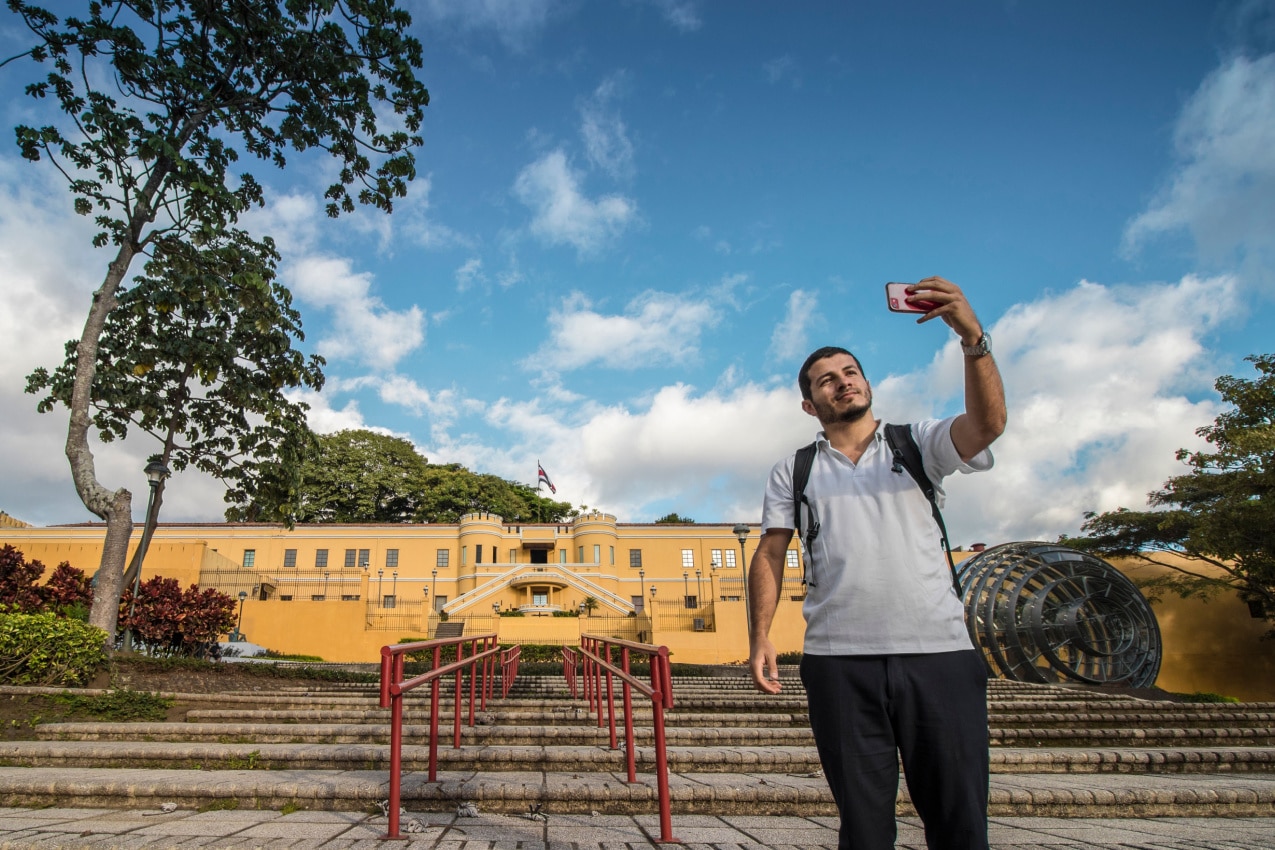
Safety Tips for Solo Women Travelers
Here are some additional useful safety tips for solo women travelers:
- Only use official transportation
- Don’t jog or do your workouts alone
- Don’t share your personal information or social media info with strangers
- Always keep in touch with your family and friends
- Always keep the battery on your phone charged
- Trust the police and ask for their help
Is It Safe to Travel to Costa Rica as a Family?
You can visit Costa Rica with your family as long as you’re careful and follow the advice we’ve shared so far, avoid going out at night, keep an eye on your kids and your belongings, and get travel insurance for the whole family. It’s also recommended to rent a car rather than use public transport and book your stay and activities ahead of time.
Natural Disasters in Costa Rica
Costa Rica is at moderate risk from hurricanes, floods, earthquakes, and volcanic eruptions.
Let’s find out more about their frequency and magnitude, followed by some useful tips on what to do if you find yourself in the middle of a natural hazard of some kind.
Hurricane Information and Precautions
The official hurricane season in Costa Rica lasts between June and November, much like in the rest of the Caribbean.
Luckily, Costa Rica is outside the central hurricane belt in the Caribbean Sea or the Gulf of Mexico and rarely gets hit by a strong hurricane. Instead, hurricane season in Costa Rica is characterized by strong winds and powerful storms that are neither especially dangerous nor life-threatening.
The consequences of those storms are not human casualties or extreme structural damage, but flooding and landslides, which are quite common.
When hurricanes do occur, frequently affected areas are Guanacaste, Alajuela, Limón, and other places along the Caribbean coastline. The Pacific coast, on the other hand, is mostly safe.
According to the UK travel advisory, the first thing you should do while visiting Costa Rica is keep up-to-date on the National Hurricane Center forecasts and follow the warnings of the World Meteorological Organization. It’s also a good idea to follow the local government’s updates.
Earthquake Information and Precautions
Earthquakes happen along cracks in the Earth’s crust, where tectonic plates meet. Costa Rica is close to some of those “fault lines,” like the Caribbean Plate, the South American Plate, the Cocos Plate, and the Nazca Plate. The most active one is the Cocos Plate.
Luckily, most of the earthquakes in Costa Rica are very weak and practically imperceptible. The last deadly earthquake occurred in 2009 in the village of Cinchona and claimed 34 lives. All tourists were safely evacuated and suffered only minor injuries.
The largest earthquake in recent history, with a magnitude of 7.6, happened in April of 1991 along the Caribbean coast. It resulted in 47 fatalities and caused structural damage to the nearby infrastructure and buildings.
Costa Rica is more than prepared for the seismic shocks that usually hit its territory. Most of the buildings are earthquake-proof.
Tsunamis, which are usually caused by stronger earthquakes, are a rare thing in Costa Rica. Since 1950, only three fatal incidents have been reported in the country.
Volcanic Eruptions Information and Precautions
There are around 16 volcanoes on the territory of Costa Rica, of which only a few are active.
The last significant eruption occurred in September 2023, when Volcan Rincon de la Vieja released a big volcanic cloud. Most of the volcanic eruptions in Costa Rica are like that—they seem scary and unusual but do not pose significant danger to human life.
There are a few exceptions, but they’re long ago. Two worth mentioning are:
- In 2000, Arenal erupted and caused two fatalities. Everyone from the nearby Tabacón Resort evacuated.
- In 1968m Arenal erupted and destroyed the village of Tabacón, resulting in a total of 78 fatalities.
The UK travel advisory cautions potential travelers to “follow local advice before traveling to any areas around volcanoes” and to “avoid volcanic areas during and immediately after heavy rainfall when there’s increased risk of lava flows.”
People with respiratory conditions may experience a worsening of symptoms after being exposed to ash plumes. That can be evaded by using a well-fitted face mask.
Costa Rica Weather Patterns: What to Expect
Costa Rica has a typical tropical climate with a dry season and a wet season cutting the year nearly in half. The dry season typically lasts from late December to April, while the wet season is between May and November. Although the wet season as a rule has more rain, the weather in Costa Rica is great year-round.
Here are some quick facts about the weather in the country:
- The average temperature throughout the year is 75°-85°F (24° – 29°C). During the dry season, the temperature can go up to 90°F, while during the wet season, it falls in the 75°-80°F (23 – 26°C) range.
- The average rainfall amounts to around 100 inches (250 centimeters) on a yearly level. Although it rains throughout the whole year, the rainiest months are August, September, and October.
- The average humidity is 70% to 80%. It’s higher in the country’s lowlands.
- The average daily number of hours of bright sunlight is between 10 and 12 hours.
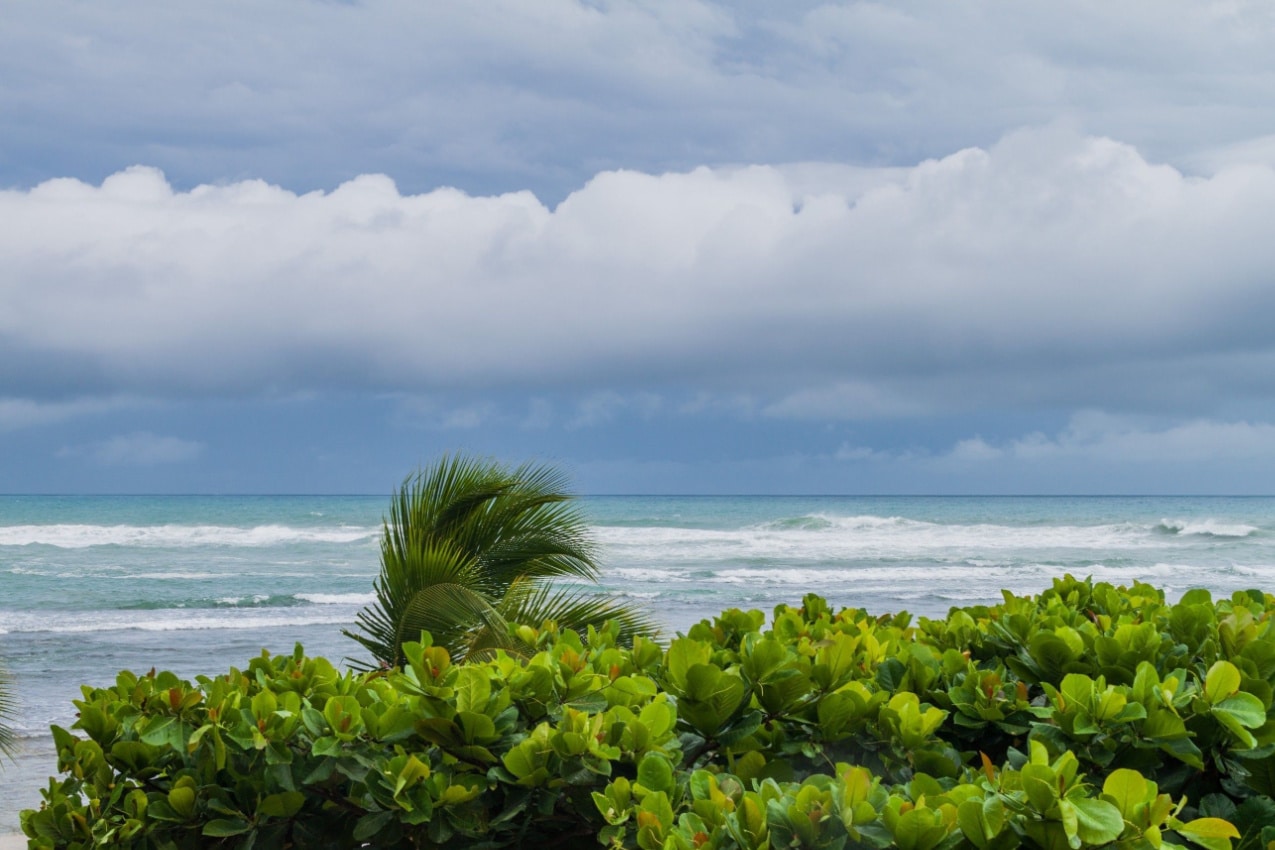
Summer
The summer in Costa Rica is very lush and green. The mornings are usually sunny and clear, while the afternoons bring short and strong outbursts of rain. Random downpours in the evenings are also common.
June starts off slow tourist-wise, but the second half of the month and the beginning of July bring families with children to Costa Rica. This is because flights are quite affordable in early summer. Other than that, July is great for surfing and other water-based activities.
As August creeps in, the wet season begins. Some days, it rains constantly. Tourists leave and it becomes less crowded and noisy. It’s the perfect time for eco activities like watching marine animals, particularly turtles.
Fall
September and October are the wet season at its highest. They are the wettest months of the year in terms of rainfall. Some of the hotels, resorts, and lodges close off completely during this period. Others offer huge discounts to visitors. Again, the country is quiet, calm, and a lot less crowded with tourists.
The hurricane season is also at its peak, with a considerable chance of a tropical storm hitting Costa Rica, causing floods and landslides. In any case, if you plan to visit Costa Rica in September and October, bring a raincoat with you.
November, much like May, is a transitional month. The rain starts to slow down, but nature is still lush, green, and breezy. It’s still not the high season, but November is slowly becoming a really popular month for visitors.
Winter
December 20th marks the official beginning of the dry season. The beginning of the month is still quiet and the prices of hotels and resorts stay low. But as the Christmas holidays draw near, Costa Rica once again becomes a really popular place. But, there’s still rainfall and strong winds, so surfers and kayakers should be really careful.
January and February, on the other hand, have perfect weather and start the peak of the high tourist season. The rain is minimal—especially in February, the driest month of the year—perfect beach weather, but limited hotel availability, so book in advance.
The end of the winter is the most popular period for tourists, weather-wise. The streets and the beaches are once again crowded, and there’s a general sense of merriment in Costa Rica–probably because there’s no rain.
Spring
The weather in March is like that of January and February. Almost no rain, lots of sun, a bit higher temperatures, and less humidity. Spring breakers are all over Costa Rica.
April is the hottest month of the year, and still very crowded and fun, with almost no available hotels whatsoever. Easter week is also a huge thing in Costa Rica, with plenty of crowds, festivals, and celebrations. Beaches are crowded, too
May, much like November, is a transitional month, when the dry season starts to dwindle, and the rains start to fall more frequently. After Easter, the crowds start thinning, and it’s once again a great opportunity for budget travelers to visit Costa Rica, as the prices of the hotel start dropping.
Carbon Monoxide Poisoning in Costa Rica
You’re in no particular danger of poisoning from carbon monoxide while traveling to Costa Rica.
That being said, there were a couple of cases which are worth mentioning, both of them caused by unfortunate circumstances.
In 2015 two nursing professionals were found unresponsive in their car, parked in Playa Uvita, in the southern Pacific area of Costa Rica. The engine was working and the air conditioning was on when they were found. Poisoning with carbon monoxide was estimated as the most likely cause of this incident.
A few years before that, two individuals were found dead in similar circumstances. The tragic event happened in a love motel between Tres Rios and Cartago. The couple left the engine of the car—which was adjacent to the apartment—running and died from carbon monoxide poisoning.
Carbon monoxide is an invisible and odorless gas that is especially dangerous in closed spaces, without any air circulation. Prolonged exposure may lead to brain damage, paralysis, and even loss of life. Most of the time people notice the presence of carbon monoxide after the symptoms, such as vomiting, headache, and stomach ache have manifested.
The best thing you could do is to buy a portable CO detector which costs only around $20. That way, you’ll have one less worry.
How to Stay Safe in Costa Rica
- Always bring your personal ID (such as a passport) with you; the police accept photocopies of the document
- Never buy or use illegal substances; the minimum sentence for possession or trafficking is eight years
- Stay out of dangerous areas
- Never leave your drinks unattended
- Never enter a non-official taxi
- Don’t stop your car for strangers signaling for help
- Be careful when using an ATM
- Never show your affluence and flaunt your valuables
- Don’t leave your valuables unattended at the beach or while using public transport
- Be cautious when using credit or debit cards, since fraud is quite common
Public Transportation Safety in Costa Rica
Public transportation in Costa Rica can be risky and unsafe.
According to the Canadian travel advisory, public bus transportation in the country is very unreliable. They point out that “schedules and routes may not be accurate. Vehicles are often late due to traffic and road conditions. Itineraries may also vary from the ones originally announced.”
The Australian travel advisory also suggests that using public transportation may put you in unnecessarily risky situations, especially concerning theft, as pickpockets usually target public buses.
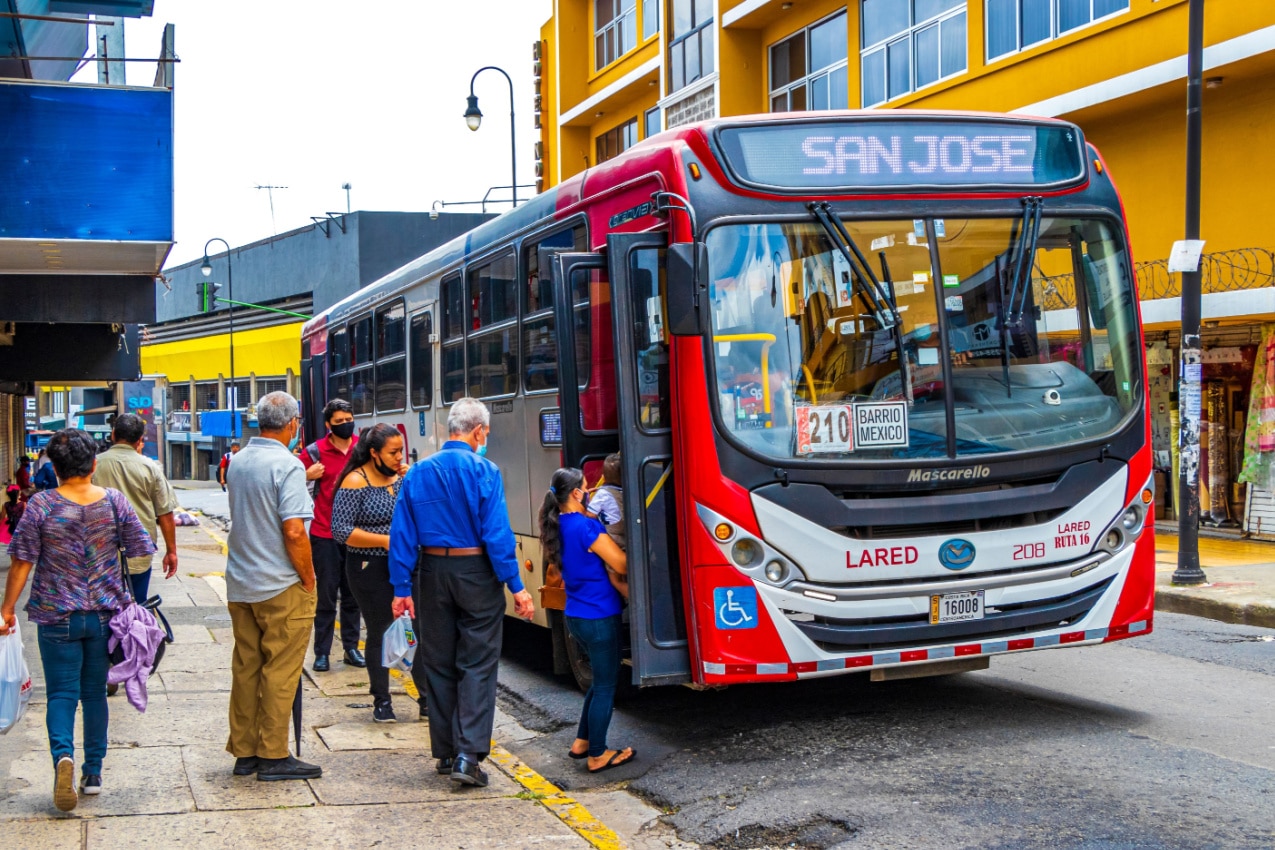
You should avoid placing your valuables in the underhead compartment or under your seat. Even sleeping while riding the bus is considered unsafe.
Police checks on public buses are common. Keep your ID, your passport, and your travel permit with you at all times, since the police may check whether visitors have overstayed their 90-day visa exemption period.
Taxis, on the other hand, are significantly safer, as long as you avoid unofficial taxis, also known as “taxi pirates”.
The official taxis are easy to spot. They are orange-colored at the airport and red-colored with a yellow triangle sticker and a box on top with the number of the company in the other parts of the country.
According to the UK travel advisory, your best and safest option is always to use radio-dispatched taxis. Also, sharing taxis with unknown people is considered especially dangerous in Costa Rica.
Medical Care Quality in Costa Rica
Costa Rica has one of the best and most developed healthcare systems in Latin America.
There are plenty of public and private hospitals in the country, staffed with experienced and highly educated medical professionals. But, there are some particularities that you should be aware of.
According to the Canadian travel advisory, the public hospitals in Costa Rica provide excellent services throughout the whole country, “but waiting times may be long.” Doctors in those facilities rarely speak English or French.
The public hospitals in rural areas and smaller towns may have fewer capabilities and may have limited emergency services.
Private hospitals and facilities, on the other hand, are almost exclusively top-notch. But, all of them are located in the capital of San Jose, and they are usually very expensive. The medical personnel and the doctors in the private hospitals almost exclusively require payment upfront.
Evacuation procedures are extremely expensive. Also, doctors in private hospitals almost never work with health insurers, which means that you should be ready to ask for reimbursement after paying the bills with your own cash or credit card.
The best thing you could do, before visiting Costa Rica, is to get to know the best hospitals in San Jose and in the other popular tourist destinations in the country. Here’s a list of the best private and public hospitals in the country.
Private Hospitals
- Hospital CIMA San José (+506 2208 1000)
- Hospital Clínica Bíblica (+506 2522 1000/+506 8529 2100)
- Hospital La Católica (+506 2246 3000/+506 8830 6765)
Public Hospitals
- Hospital Tony Facio Castro (+506 2758 2222)
- Hospital Guápiles (+506 2710 6801)
- Hospital de Ciudad Neily (+506 2785 9600)
- Golfito Hospital Manuel Mora Valverde (+506 2775 7800)
- Hospital Monseñor Víctor Manuel Sanabria Martínez (+506 2630 8000)
- San Rafael Hospital (+506 2436 1001)
- Hospital San Carlos (+506 2401 1200)
- Hospital Carlos Luis Valverde Vega (+506 2456 9700)
- Hospital Max Peralta Jiménez (+506 2550 1999)
- William Allen Taylor Hospital (+506 2558 1300)
- Hospital La Anexión de Nicoya (+506 2685 5066)
- Hospital Enrique Baltodano Briceño – Liberia (+506 2690 9700)
- San Vicente de Paúl Hospital (Hospital de Heredia) (+506 2562 8100)
Stay Cautious!
Stay cautious–erring on the side of safety–and you’ll have a great vacation in Costa Rica.
Although the country has some notable problems with crime, they mostly target the local population and the gangs in the problematic parts of the country.
So don’t let fear ruin your holiday! As long as you’re wary and careful, you’ll most likely be safe.
